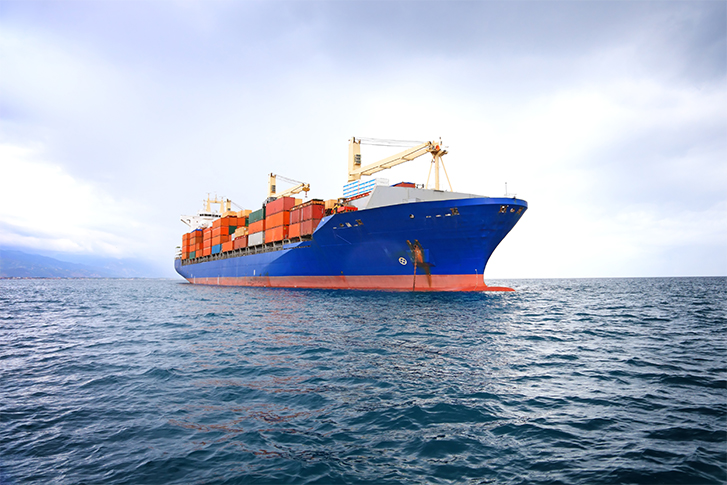When it comes to shipping goods to India, there are two main options: air cargo and sea cargo. Air cargo involves shipping goods via an airline, while sea cargo involves shipping goods via a cargo ship. Both options have their advantages and disadvantages, and the choice of which one to use depends on several factors.
Air cargo refers to the transportation of goods via an airline. This method is usually faster and more expensive than sea cargo. Sea cargo, on the other hand, refers to the transportation of goods via a cargo ship. This method is usually slower but less expensive than air cargo. When shipping to India, both air cargo to India and sea cargo to India are popular options.
Shipping is an essential aspect of international trade. It enables businesses to transport goods from one part of the world to another, including shipping to India. Without shipping, it would be difficult for businesses to access the global market and for consumers to access goods from other countries.
Air cargo and sea cargo both have their advantages and disadvantages. Air cargo is faster but more expensive than sea cargo, including air cargo to India. Sea cargo is slower but less expensive than air cargo, including sea cargo to India. The choice of which one to use depends on several factors, such as the type of goods being shipped, the distance of the shipment, and the urgency of the shipment when shipping to India.
Cost comparison between Air and Sea Cargo
The cost of shipping goods via air cargo to India is generally higher than sea cargo. This is because air cargo is faster and more expensive to operate. Air cargo to India also requires more security measures, which can add to the cost.
Sea cargo to India is generally less expensive than air cargo. This is because sea cargo is slower and less expensive to operate. However, the cost of sea cargo to India can vary depending on the route, the size of the shipment, and the type of goods being shipped.
Air cargo to India is generally faster than sea cargo. Air cargo shipments can take anywhere from a few days to a week to arrive, depending on the destination in India. Sea cargo, on the other hand, can take several weeks or even months to arrive, depending on the distance of the shipment.

Air-cargo-to-India
If you need to ship goods urgently to India, air cargo to India is usually the better option. This is because air cargo is faster than sea cargo and can deliver goods quickly. However, air cargo to India is also more expensive than sea cargo, so the choice of which one to use depends on the urgency of the shipment and the budget available.
Capacity Comparison between Air and Sea Cargo
Air cargo has limited capacity compared to sea cargo, including air cargo to India. This is because airlines have limited space on their planes for cargo. Sea cargo, on the other hand, can carry a much larger volume of goods. Cargo ships can transport containers that are several times larger than the cargo holds of aeroplanes.
Air cargo to India is generally more flexible than sea cargo. This is because airlines operate on a more frequent schedule than cargo ships. Air cargo to India can be scheduled to depart and arrive at specific times, which can be convenient for businesses that need to meet deadlines. Sea cargo to India, on the other hand, is subject to the schedules of cargo ships, which can be less flexible.
Sea cargo to India is usually the better option for bulk shipments. This is because cargo ships have a much larger capacity than aeroplanes. Cargo ships can carry a large volume of goods in containers, which makes them ideal for bulk shipments to India. Air cargo to India, on the other hand, has limited capacity and is generally not suitable for large shipments.
Safety Comparison between Air and Sea Cargo
When it comes to shipping safety, both air and sea cargo have their risks. However, air cargo is generally considered to be safer than sea cargo. This is because airlines have strict safety protocols in place to ensure that goods are transported safely. Cargo planes are also designed to handle various types of goods, including hazardous materials, which can be transported safely via air cargo.
Sea cargo, on the other hand, is subject to various risks, such as piracy, extreme weather conditions, and collisions. Cargo ships are also more susceptible to damage from rough seas, which can lead to goods being damaged or lost.
Security Comparison between Air and Sea Cargo
When it comes to security, both air and sea cargo are subject to strict regulations. Air cargo is subject to stringent security measures, such as screening of passengers and cargo, to prevent the transportation of dangerous goods or contraband. Cargo planes are also equipped with security measures, such as locks and seals, to prevent unauthorized access to goods.
Sea cargo is also subject to strict security measures, such as screening of cargo and passengers. Cargo ships are equipped with security measures, such as surveillance cameras and armed guards, to prevent piracy and other security threats.
When it comes to high-value shipments, air cargo is usually the better option. This is because air cargo is faster and more secure than sea cargo. Cargo planes are designed to transport high-value goods, such as electronics, jewellery, and pharmaceuticals, which require strict security measures to prevent theft or damage.
Sea cargo is also suitable for high-value shipments, but it may not be as secure as air cargo. Cargo ships are subject to various risks, such as piracy, which can put high-value shipments at risk.

sea-cargo-to-India
Environmental impact comparison between Air and Sea Cargo
When it comes to environmental impact, sea cargo is generally considered to be more environmentally friendly than air cargo. This is because cargo ships emit less carbon dioxide per tonne of cargo than cargo planes. Cargo ships are also more energy-efficient than cargo planes, which can reduce their overall environmental impact.
Air cargo, on the other hand, is subject to high fuel consumption and carbon emissions due to the use of jet fuel. Cargo planes emit a significant amount of carbon dioxide per tonne of cargo, which can contribute to climate change and other environmental issues.
Which is better for the environment?
Overall, sea cargo is considered to be better for the environment than air cargo. However, both options have their environmental impact, and businesses should take steps to reduce their carbon footprint by using more energy-efficient transport options or reducing the number of goods being shipped.
Customs clearance process for Air and Sea Cargo
When it comes to customs clearance, both air and sea cargo are subject to various regulations and procedures. Goods being shipped via air cargo are subject to customs clearance at the airport of arrival. This process involves the inspection of goods, payment of customs duties, and clearance of goods for entry into the country.
Goods being shipped via sea cargo are subject to customs clearance at the port of arrival. This process involves the inspection of goods, payment of customs duties, and clearance of goods for entry into the country.
Regulations Comparison between Air and Sea Cargo
Both air and sea cargo are subject to various regulations and requirements. Air cargo is subject to regulations such as the International Air Transport Association (IATA) Dangerous Goods Regulations, which set out the rules for the transport of hazardous materials via air cargo.
Sea cargo is subject to regulations such as the International Maritime Dangerous Goods (IMDG) Code, which sets out the rules for the transport of hazardous materials via sea cargo.
The ease of customs clearance depends on several factors, such as the type of goods being shipped, the country of origin and destination, and the regulatory requirements. In general, air cargo may be easier to clear customs as the customs clearance process is typically faster and more streamlined than sea cargo. This is because air cargo is subject to fewer regulatory requirements than sea cargo, which can speed up the clearance process.
The choice between air and sea cargo depends on various factors, including shipping cost, time, capacity, flexibility, safety, security, environmental impact, and customs clearance. Air cargo is generally faster and more suitable for urgent shipments, high-value goods, and shipments with time constraints. Sea cargo, on the other hand, is generally more cost-effective, more suitable for bulk shipments, and more environmentally friendly.
Ultimately, businesses should weigh the pros and cons of each option based on their individual shipping needs and requirements. By considering the factors outlined in this article, businesses can make an informed decision on whether air or sea cargo is the better option for shipping to India.